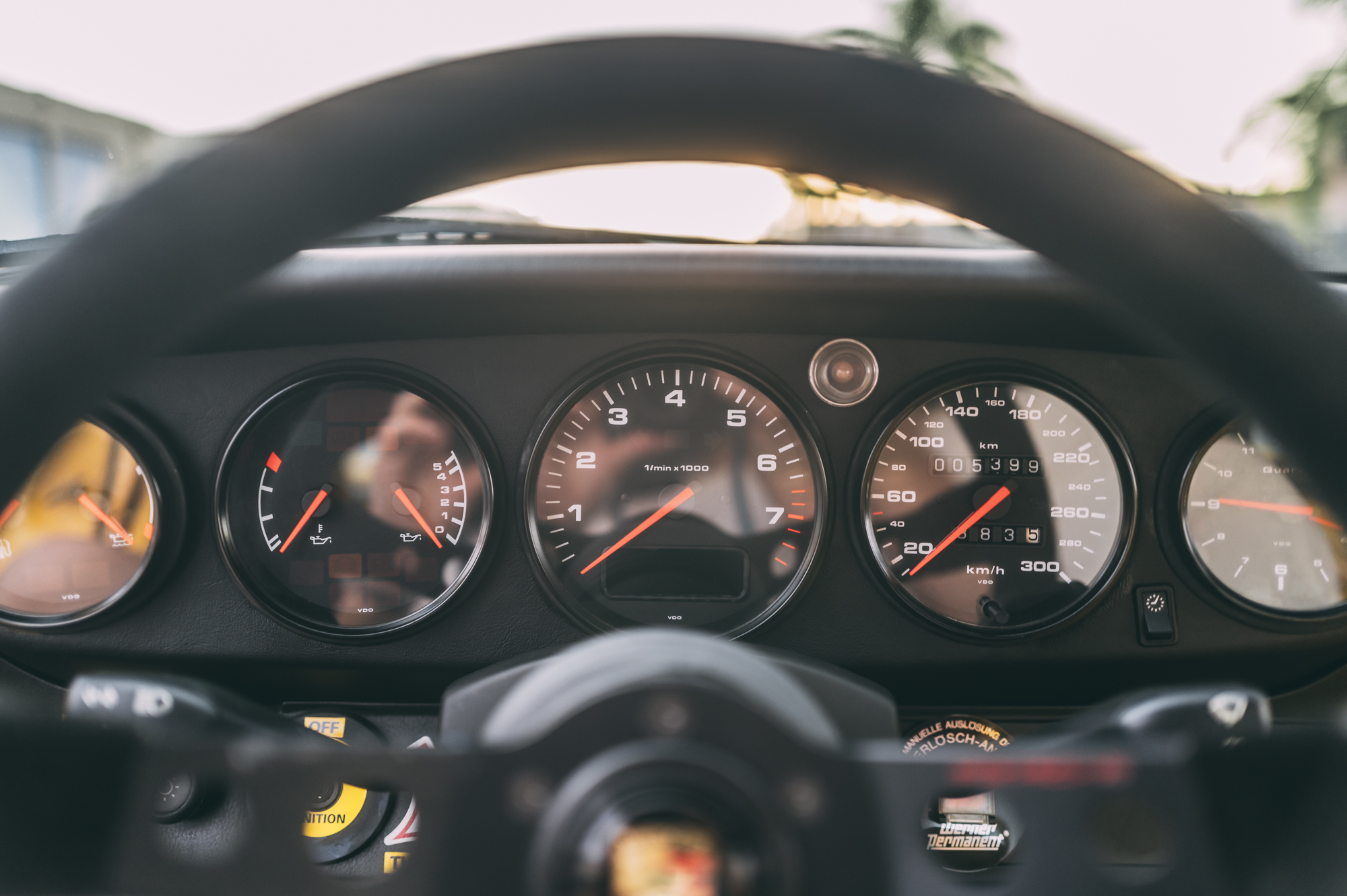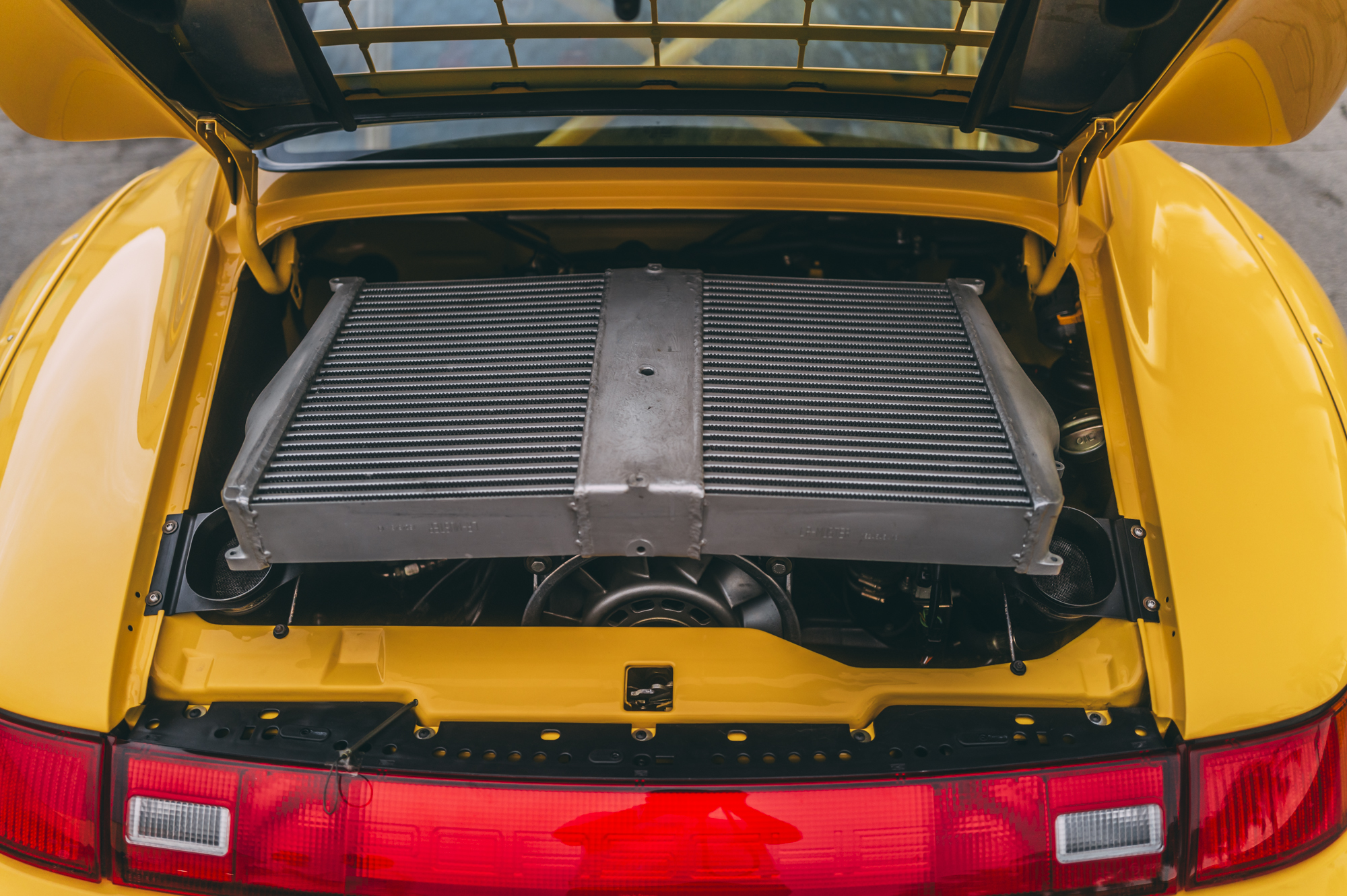
Porsche
993 GT2R
Key Facts:
- One of 78 examples of the 993 GT2R
- Since 2013 in the USA
- Just 5,400km indicated
HISTORY
With the demise of Group B in the late 80’s seeing thanks in part to the ridiculously fast and dangerous rally cars which sadly led to fatalities, Dr. Ulrich Bez at Porsche’s R&D Board, wanted to pivot back to a more general 911 focus. The FIA had banned Group B and were looking to end Group C prototypes, which they eventually abolished at the end of 1992. The FIA therefore looked to reinvent the endurance category, once the backbone of GT racing. However, with many people and governing bodies arguing with ideas of how it should take form, it took almost three years for the technical regulations for the GT1 and GT2 categories to be harmonized. In parallel, during the late 80’s and early 90’s, Porsche’s motorsport department was struggling to survive and needed something to sell and flush money into the department. Thankfully, the new rules led to the GT cars the motorsport department needed to change its course. Porsche interestingly never planned the GT2 to be a ‘WORKS’ entry, as it wasn’t going to be the desired overall winner at the 24 Hours of Le Mans, that was a destiny for the GT1. The greenlight was therefore only given to the production of a customer sports model, the 911 GT2 and GT2 Rennversion.
After its first official presentation at the Essen Motor Show in November 1994, orders came in quickly. The GT2 Rennversion was an instant success! The Stuttgart manufacturer was able to secure 45 orders in a very short space of time, which prompted a press release in March 1995 where they claimed to have already sold all 45 GT2R’s. Built on the same assembly line as the road going Carrera RS and Carrera RS Clubsport that had already been planned for the first half of the 1995 production year, it became clear that a bottleneck had formed when attempting to squeeze the special motorsport department GT2R onto the Zuggenhaysen assembly line at the same time. Ultimately, and after some arguments between the road and race departments, it was agreed that they would produce just two GT2R’s a day with a limit to 45 units, one in the morning and one in the afternoon shifts to allow continuity of build quality with workers knowing what was expected. The arrival of the Boxster became the ultimate driving factor in keeping the GT2R production numbers so exclusive.
The GT2R was restricted in many ways by FIA regulations at the time and differed from the road version in a number of ways although retained much of the classic 911 form. The weight was kept to a minimum of 1100kg (2425lbs) and it was given aggressive GRP fender flares, prominent front air dam, and adjustable rear wing, with special openings on either side to feed the turbocharged engine. The ‘005’ optioned Rennsport version deleted the roof liner, carpeting, a and B pillar blinds, cabin painted in body shell color, sun visor only on drivers side, deleted engine bay insulation, active carbon retainer, additional fans, fire extinguisher, emergency kill switch activated, delete of dual mass flywheel, welded in roll cage, bucket seat with fire resistant fabric in black and 6 point harness.
With only five colors available yellow, red, white, blue or black, only 10 were optioned in ‘X4’ Speed Yellow. The standard GT2R was delivered ready to hit the track. However, Porsche did offer a few extras. Customers could request a different brake system (M427) that was better suited for longer endurance races such as the 12 Hours of Sebring or 24 hours of Le Mans. A fast fueling system was also available (M084). The standard and very capable shocks could be replaced for (M456) adjustable Bilstein dampers, and a now antiquated data log system attached to the TAG engine sensors, noted as M147 could be added. In some cases, catalytic convertors were required under certain race series regulations which led to option M146, that corresponded to LM GT2 regulations with required catalytic convertors and mufflers in the exhaust system.
The engine in the GT2R was the purpose-built M64/81 engine with twin K24 turbochargers, larger intercoolers, high-lift camshafts, an upgraded valve train, and a TAGtronic 3.8 ECU. The quest was to achieve the output with the given air restrictor size of 33.8mm in diameter for the BPR series entries. Unlike the road version where the engine was able to intake as much air as the twin turbines provided, and controlled by an ECU from Bosche using their Motronic 5.1, air restrictors were used in GT racing as a means to bring different engine concepts into a desired and equalized performance window. They necessitated modifications to the Porsche’s air-cooled bi-turbo 3.6 engine. The Rennversion received a totally different engine control unit. The Bosche unit was exchanged to the state of the art TAGtonics 3.8 unit, which better modulated the fuel pressure, injectors and temperatures for improved overall performance. This package, together with the boost in pressure from 0.8 to 0.9 bar, was later conservatively rated at only 22hp more than the road version, with a reported 450 bhp with 479 lbs./ft. of torque. However, to cast doubt on the downplayed press release, there was really no reason to limit the power output as the engineers had envisioned and output of 480hp, keeping in conformity to Le Mans GT2 regulations!
The suspension was largely the same as the road-going GT2, but deliberately tuned with special springs, shock absorbers, adjustable anti-roll bars, and a shock tower brace. Four-piston brake calipers and ventilated discs were managed by a race-tuned ABS. Factory prepared for endurance events, the GT2R was delivered with a 100-liter fuel cell, air jacks, and three-piece BBS alloy wheels shod in racing rubber. To save weight, Porsche made the front lid and doors from aluminum and used thin-gauge glass for every window but the windshield. The interior was purposefully equipped with a full welded-in Matter roll cage, Recaro racing bucket seats, six-point safety harnesses, and Fox fire suppression system.
Campaigned by wealthy amateurs and well-established private teams, the 993 GT2Rs went on to achieve tremendous success. Between 1995 and 1998, these cars dominated international sports car racing, taking the GT2 title in the BPR Global GT Endurance Championship, IMSA Sports Car Championship, SCCA World Challenge, and the German ADAC GT Cup!
OUR 993 GT2R
Featured here, Chassis #393377 was sold new via Japanese exotic car dealer, Art Sports, the Porsche’s first private owner was Seigo Tanabe, proprietor of Shelby Asia Inc., an authorized importer of Shelby American and Superformance cars based in Yokohama, Japan. During his ownership, the GT2R was never raced competitively and was instead used carefully for private track events.
It was then sold on to its first American collector owner in 2013, and resided in a private collection that included a road-going 993 GT2, among other significant Porsches. Aside from its appearance at Rennsport Reunion V in September 2015, the GT2R had not been shown or campaigned on track. Consistent with its limited use, the odometer showed just 5,381 km in 2022. Trading hands that same year, it was acquired by another meticulous collector owner who has preserved the condition and kept the car with a known Porsche racing team for continued servicing. Today with just 5386km shown on the odometer, as would be expected of such a well-kept, low-mileage example, this GT2R presents in exceptional, show-quality condition. Its factory-supplied components, including the Premier fuel cell, Fox fire suppression system, and Matter roll cage, remain in place and many components display appropriate 1994 and 1995 date codes.














